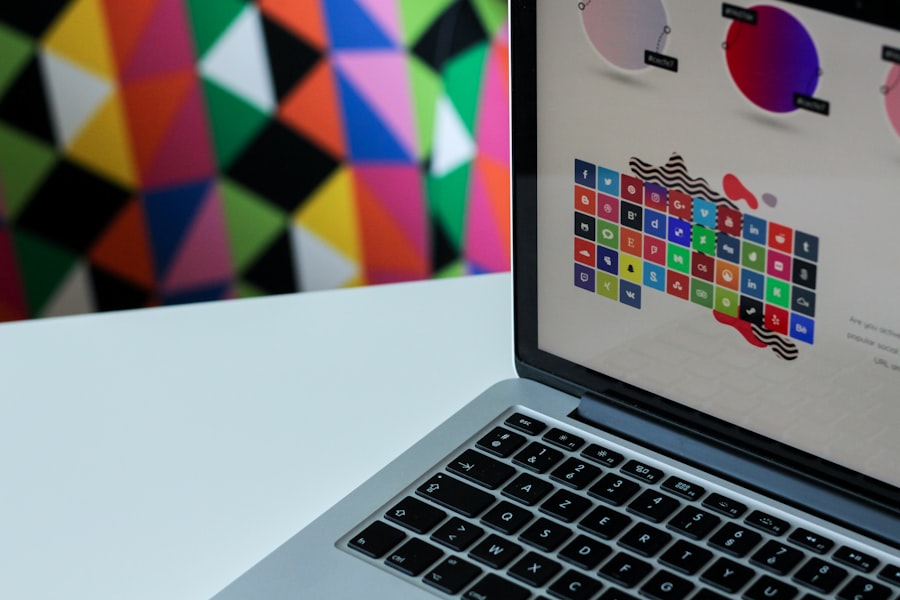
As I delve into the world of artificial intelligence (AI), I find myself captivated by its transformative potential, particularly within creative teams. The integration of AI into creative processes is not merely a trend; it represents a paradigm shift that redefines how we conceptualize creativity and collaboration. In an era where innovation is paramount, AI serves as a powerful ally, augmenting human capabilities and enabling us to push the boundaries of our creative endeavors.
I have witnessed firsthand how AI can enhance brainstorming sessions, streamline workflows, and even inspire new ideas that might not have emerged through traditional methods. The creative landscape is evolving rapidly, and AI is at the forefront of this evolution. By harnessing the power of machine learning and data analytics, creative teams can now access tools that not only assist in generating ideas but also provide insights that were previously unattainable.
As I explore this intersection of technology and creativity, I am excited about the possibilities that lie ahead. The collaboration between human intuition and AI’s analytical prowess opens up new avenues for artistic expression and innovation, making it an exhilarating time to be part of a creative team.
Key Takeaways
- AI is revolutionizing creative teams by streamlining processes, enhancing collaboration, leveraging content creation, analyzing data, automating tasks, and improving project management.
- AI tools can streamline creative processes by automating repetitive tasks, such as image editing and video rendering, allowing teams to focus on more complex and creative aspects of their work.
- AI tools can enhance collaboration by providing real-time feedback, facilitating communication, and enabling remote teams to work together seamlessly.
- AI can be leveraged for content creation by generating personalized and targeted content, optimizing design elements, and even creating original music and artwork.
- AI can be used for data analysis and insights, helping creative teams to understand audience preferences, track performance metrics, and make data-driven decisions to improve their work.
Streamlining Creative Processes with AI
One of the most significant advantages I have observed in the integration of AI into creative processes is the ability to streamline workflows. In my experience, creative projects often involve numerous stages, from ideation to execution, each requiring time and effort. However, with AI tools at my disposal, I can automate various aspects of these processes, allowing me to focus on what truly matters: the creative output.
For instance, AI-driven project management software can help me track progress, allocate resources efficiently, and even predict potential bottlenecks before they arise. Moreover, AI can assist in organizing and categorizing vast amounts of data and inspiration that often flood creative teams. I have found that using AI algorithms to analyze trends and preferences can significantly reduce the time spent on research.
Instead of sifting through endless articles or social media posts, I can rely on AI to curate relevant content tailored to my team’s needs. This not only enhances efficiency but also fosters a more dynamic creative environment where ideas can flourish without the constraints of tedious administrative tasks.
Enhancing Collaboration with AI Tools

Collaboration is at the heart of any successful creative endeavor, and AI tools have revolutionized how I interact with my team members. In my experience, platforms powered by AI facilitate seamless communication and idea sharing, breaking down geographical barriers that once hindered collaboration. For instance, I have utilized AI-driven brainstorming applications that allow team members to contribute ideas in real-time, regardless of their location.
This democratization of creativity ensures that every voice is heard and valued, leading to richer and more diverse outcomes. Additionally, AI tools can analyze team dynamics and suggest optimal collaboration strategies based on individual strengths and weaknesses. By leveraging these insights, I can foster a more cohesive team environment where everyone feels empowered to contribute their unique perspectives.
The ability to harness AI for collaboration not only enhances productivity but also cultivates a culture of innovation where experimentation is encouraged. As I continue to explore these tools, I am constantly reminded of the importance of human connection in the creative process, even as technology plays an increasingly prominent role.
Leveraging AI for Content Creation
When it comes to content creation, I have found that AI can be an invaluable partner in generating ideas and producing high-quality material. The capabilities of natural language processing (NLP) have advanced significantly, allowing AI to assist in drafting articles, scripts, and even marketing copy. In my own work, I have experimented with AI writing assistants that help me brainstorm topics or refine my writing style.
This not only saves time but also sparks creativity by providing fresh perspectives that I might not have considered. Furthermore, AI can analyze audience preferences and engagement metrics to tailor content more effectively. By leveraging data-driven insights, I can create content that resonates with my target audience on a deeper level.
For example, I have used AI tools to identify trending topics within my niche, enabling me to produce timely and relevant content that captures attention. The synergy between human creativity and AI’s analytical capabilities has transformed my approach to content creation, allowing me to produce work that is both innovative and impactful.
Using AI for Data Analysis and Insights
In today’s data-driven world, the ability to analyze information quickly and accurately is crucial for any creative team. I have come to appreciate how AI can transform raw data into actionable insights that inform our creative strategies. By employing machine learning algorithms, I can uncover patterns and trends that would be nearly impossible to detect manually.
This has proven invaluable in understanding audience behavior and preferences, allowing me to tailor our projects accordingly. For instance, I have utilized AI-powered analytics tools to assess the performance of previous campaigns or projects. By examining metrics such as engagement rates and conversion statistics, I can identify what worked well and what needs improvement.
This iterative approach not only enhances our future projects but also fosters a culture of continuous learning within the team. As I embrace these data-driven insights, I am reminded of the importance of balancing intuition with empirical evidence in the creative process.
Automating Repetitive Tasks with AI

Freeing Up Time for Creative Work
In any creative environment, there are numerous mundane activities that can consume valuable time and energy—tasks such as scheduling meetings, managing emails, or organizing files. By leveraging AI-powered automation tools, I can delegate these responsibilities to technology, freeing up my time for more meaningful creative work.
Streamlining Communication
For example, I have implemented AI chatbots to handle routine inquiries from clients or team members. This not only improves response times but also allows me to focus on higher-level strategic thinking rather than getting bogged down in administrative details. Additionally, automating project updates and reminders ensures that everyone stays informed without requiring constant manual input from me or my colleagues.
Transforming Workflow Efficiency
This newfound efficiency has transformed our workflow, enabling us to dedicate more time to brainstorming and executing innovative ideas.
Improving Project Management with AI
Effective project management is essential for any creative team striving for success. In my experience, incorporating AI into project management has significantly improved our ability to plan, execute, and evaluate projects efficiently. With AI-driven project management tools at my disposal, I can easily track progress, allocate resources effectively, and identify potential risks before they escalate into major issues.
By analyzing historical data from previous projects, AI can forecast timelines and resource needs with remarkable accuracy. This allows me to set realistic deadlines and allocate team members based on their strengths and availability.
Furthermore, real-time updates ensure that everyone remains aligned on project goals and milestones. As a result, our team operates with greater clarity and purpose, ultimately leading to higher-quality outcomes.
Overcoming Challenges and Ethical Considerations in AI Implementation
While the benefits of integrating AI into creative teams are undeniable, I am also acutely aware of the challenges and ethical considerations that accompany this technology. One significant concern is the potential for bias in AI algorithms, which can inadvertently perpetuate stereotypes or exclude certain voices from the creative process. As I navigate this landscape, I am committed to ensuring that our use of AI is inclusive and representative of diverse perspectives.
Moreover, there is an ongoing debate about the role of human creativity in an increasingly automated world. While AI can enhance our capabilities, it is essential to remember that creativity is inherently human—a blend of emotion, intuition, and experience that machines cannot replicate fully. As I embrace AI as a tool rather than a replacement for human creativity, I strive to maintain a balance between leveraging technology and nurturing the unique qualities that define our artistic endeavors.
In conclusion, as I reflect on my journey with AI in creative teams, I am filled with optimism about the future possibilities it presents. From streamlining processes to enhancing collaboration and content creation, AI has become an indispensable partner in my creative endeavors. However, it is crucial to approach this technology thoughtfully and ethically, ensuring that we harness its power while preserving the essence of human creativity.
As we continue to explore this exciting frontier together, I am eager to see how we can shape a future where technology amplifies our artistic expression rather than diminishes it.
FAQs
What is AI?
AI, or artificial intelligence, refers to the simulation of human intelligence processes by machines, especially computer systems. These processes include learning, reasoning, and self-correction.
How can AI boost productivity in creative teams?
AI can boost productivity in creative teams by automating repetitive tasks, providing data-driven insights for decision-making, and assisting in the generation of new ideas and designs.
What are some examples of AI tools that can be used in creative teams?
Examples of AI tools that can be used in creative teams include virtual assistants for scheduling and organizing, machine learning algorithms for analyzing consumer data, and generative design software for creating new concepts.
What are the potential benefits of using AI in creative teams?
The potential benefits of using AI in creative teams include increased efficiency, improved accuracy, faster decision-making, and the ability to explore new creative possibilities.
Are there any potential drawbacks to using AI in creative teams?
Potential drawbacks to using AI in creative teams include the risk of job displacement, concerns about data privacy and security, and the need for ongoing training and education to keep up with AI advancements.







No Comments